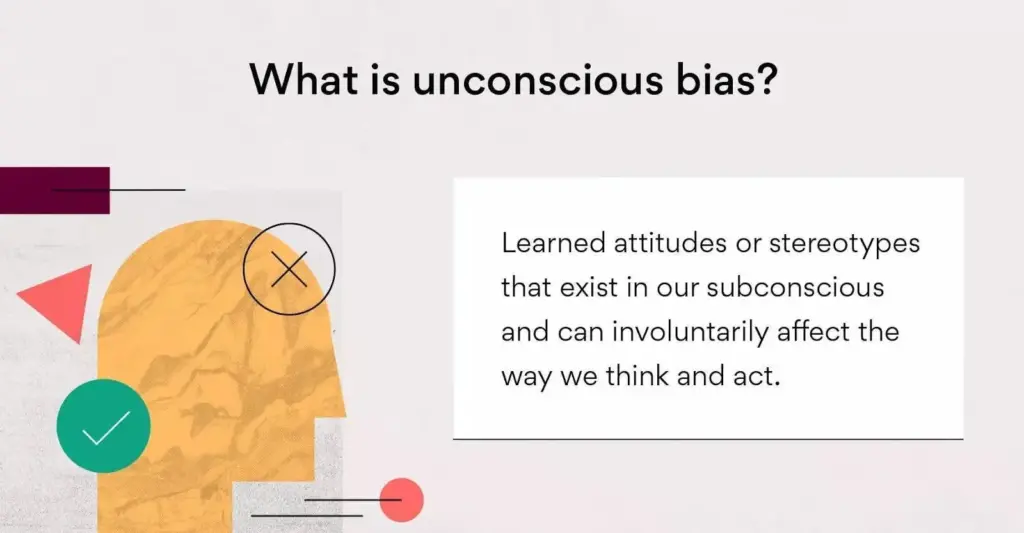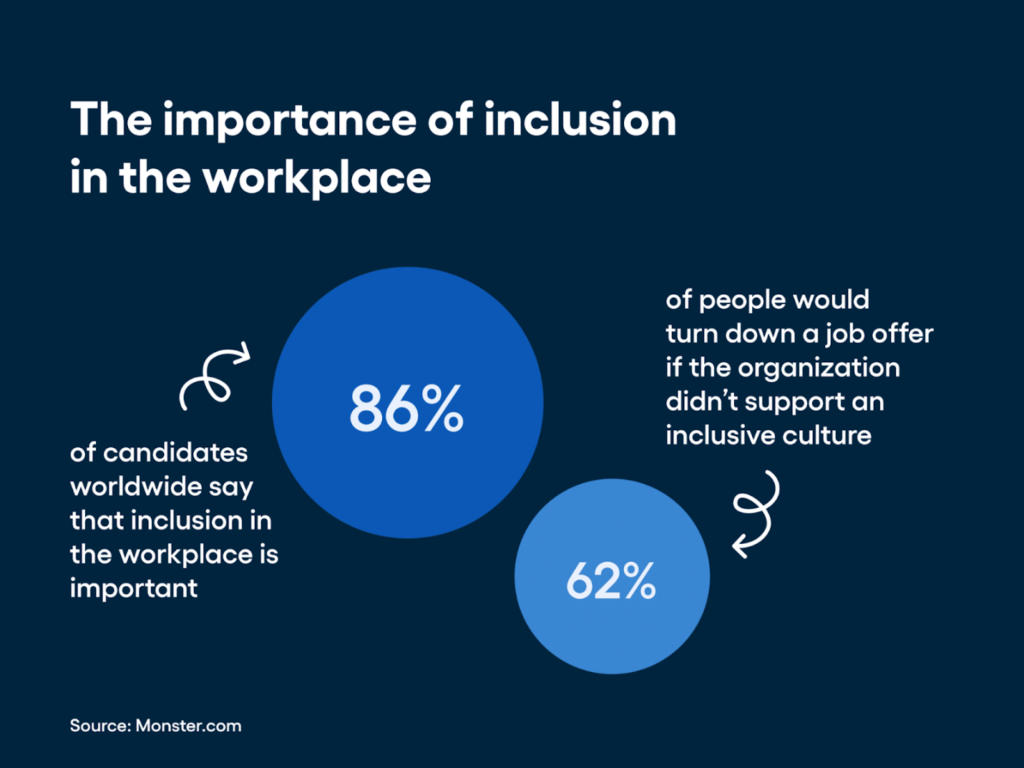Recognizing and Minimizing Unconscious Bias in the Workplace
The corporate world has seen greater prioritization of DE&I and implementation of diversity initiatives in recent years than ever before. This is a needed and positive change, one that’s creating equal opportunities in the workplace and inclusive cultures for all. But one challenge is proving difficult to combat even when DE&I is a top strategic priority: unconscious bias.
When left unchecked, unconscious bias is an invisible force that can shape company culture, affect hiring and promotion practices, and ultimately impact an organization’s diversity, equity, and inclusion (DE&I) outcomes. As modern businesses strive to be more inclusive and equitable, recognizing and mitigating unconscious bias is not just morally imperative—it’s a strategic necessity.
Let’s unpack how to recognize unconscious bias in the workplace and five practical strategies to minimize it continuously.
What Is Unconscious Bias in the Workplace?
Unconscious biases are predetermined stereotypes or attitudes we hold about particular people or groups without our own awareness. Everyone has them—they’re an adaptive process that evolved to help humans make decisions based on prior knowledge and experience.

In the early days of human history, biases helped protect people from danger, like animal predators or adversarial tribes. Of course, we don’t need our unconscious biases in quite the same way anymore, but they still help us in our daily lives as we make decisions and recognize safe vs. unsafe situations.
In the workplace, however, unconscious biases can be a major barrier to diversity, equity, and inclusion (DE&I), a top priority for organizations seeking to provide equitable opportunities and promote inclusive company culture.
Unconscious biases about traits related to gender, race, culture, and the like can lead to individuals and even entire groups of people being unable to hold certain positions or accomplish certain goals.
Unconscious bias presents itself in many forms, including affinity bias, halo effect, perception bias, and confirmation bias (among others).

When considering the nature of unconscious bias and the types that exist, you can imagine the many ways it can impact DE&I in all areas of business, from recruitment and hiring to internal promotions and opportunities to successful collaboration among employees to the level of diverse representation your organization can achieve.
And your level of DE&I genuineness and effectiveness? It directly impacts your potential to recruit top talent and thus achieve business success over time. Today, 86% of job candidates say that inclusion in the workplace is essential, and 62% say they’d turn down a job that didn’t exist.
Further, 70% of current employees say that they expect their organizations to be transparent about the diversity of their workforce.

What this tells company leaders is that DE&I—and the elimination of unconscious biases that prevent it—must be a strategic priority.
Because unconscious biases are, well, unconscious, it’s essential to build awareness among leaders and employees about their existence and how to eliminate them in professional decision-making. Next, we’ll dive into one of the most commonly used strategies to do this: unconscious bias training.
Why Traditional Unconscious Bias Training Isn’t Enough
The most traditional and common strategy for reducing unconscious bias in the workplace is to conduct HR training. These typically involve lectures, workshops, and scenario-based interactive activities (often a combination of the three) wherein employees learn about unconscious biases and how they manifest in workplace settings.
The problem with this approach is that knowing about unconscious bias doesn’t eliminate it. Studies on the subject have shown that it even does the opposite. According to Harvard Business Review, a 2019 meta-analysis of nearly 500 studies that included 80,000 people found that unconscious bias training does not change workplace behavior.
A separate study that reviews 700+ companies found unconscious bias training decreased the likelihood that black men and women would advance in their organizations.
Creating awareness—the primary goal of traditional unconscious bias training—is not an effective way to eliminate bias and enhance DE&I.
Instead, Harvard Business Review reports, companies must aim to make structural changes. This means changing the way a company operates and makes decisions to improve DE&I standards and representation. It means promoting a culture where employees are informed enough to recognize their biases and have the necessary tools to manage them.
Today, one of the most potent tools every company has in its arsenal is data. A data-driven approach to eliminating unconscious bias is the most effective way to ensure it translates to accurate DE&I results. The following section will explore five strategies for leveraging data to accomplish this goal.
Minimizing Unconscious Bias in the Workplace: 5 Strategies That Work
Modernize Bias Training
Move beyond traditional one-off bias training sessions by incorporating modern educational tools that engage employees regularly. Include continuous learning modules like webinars or frequent content that are more interactive and encourage ongoing reflection. These methods can help employees recognize and alter their behavioral patterns more effectively.
Conduct Data-Driven Assessments
Use data analytics to identify trends and patterns in employee behavior, recruitment, promotion, and team dynamics that may suggest unconscious biases. Analyze performance reviews, hiring success rates, and employee feedback to provide objective insights that drive strategic changes.
Promote Inclusive Culture
Create an environment that celebrates diversity at all levels of the organization. Inclusive culture initiatives can include diversity councils, employee resource groups, and regular events highlighting different cultures, lifestyles, and perspectives. This encourages an open dialogue and deeper understanding among employees.
Implement Feedback Mechanisms
Develop clear, anonymous channels through which employees can report their experiences and observations regarding unconscious biases. This could be through regular surveys, suggestion boxes, or digital platforms. The key is to ensure that employees feel safe and that their voices will be heard without any repercussions.
Diversify Hiring Practices
Re-examine and adjust your recruitment strategies to broaden the pool of candidates. This can include outreach to diverse candidate communities, using software that anonymizes resumes, and ensuring that job descriptions are free from biased language. Additionally, implement diverse interview panels to counter individual biases during the recruitment process.
More on DE&I
The journey toward dismantling unconscious bias is both a personal and a collective one. It is about more than acknowledging its presence; it’s about actively engaging in the change we need to see. When we minimize bias, we don’t just tick a box in the DE&I checklist—we unlock the full potential of our workforce, we drive innovation, and we build companies that are not only successful but also equitable and just. For a deeper dive into solving DE&I challenges in our current corporate landscape, download the recent whitepaper: CMOs & Chief DE&I Officers: Joined at the Hip for a DE&I Revolution.


